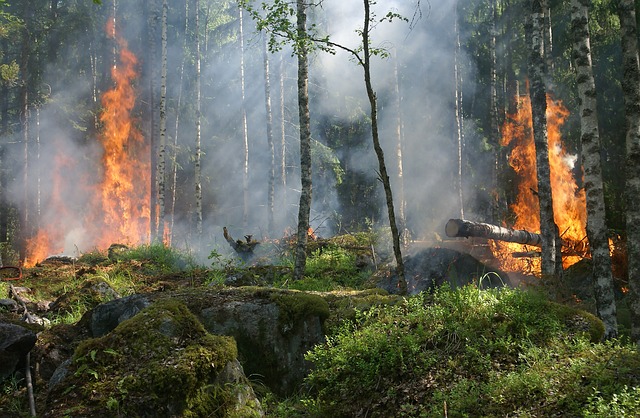When you think about breathing (well, you probably don’t think too much about it) unless you have a chronic condition like asthma or COPD, maybe recently had Covid, or perhaps you know a friend or loved one who has breathing concerns. It’s likely you never thought too much about the air quality in these green mountains of the NEK. After all, in just 2022 US News reported that Vermont was ranked #4 in the country for the best air quality! In fact, Vermont was rated as the best for natural environment rankings as having the least chemical pollution, lowest industrial toxins, and lowest pollution health risks! All wonderful things to boast about until the fires started.
A major wildfire started around May 27, 2023, in Nova Scotia, Canada. These fires have been destroying surrounding areas, causing mass evacuations and if you haven’t noticed, causing massive amounts of smoke! When wildfires occur anywhere, the smoke plumes can be carried by prevailing winds across long distances, affecting neighboring regions such as Vermont. The transport of smoke from these fires can result in reduced air quality and visibility, as well as potential health risks for residents. Unfortunately, that’s what we’ve seen and been experiencing here as of late.
The consequences of these fires are complex. First, they pose a threat to human life and safety because wildfires release large amounts of carbon dioxide (CO2) into the atmosphere, contributing to climate change. The smoke emitted during these fires contains various pollutants, including particulate matter (PM), carbon monoxide (CO), nitrogen oxides (NOx), and volatile organic compounds (VOCs). These pollutants can have detrimental effects on air quality, human health, and the environment.
The impact of wildfire smoke on air quality is measured using the Air Quality Index (AQI), which provides information about the concentration of pollutants in the air. When the smoke from Canadian wildfires reaches Vermont, it can significantly increase the levels of PM2.5 (particulate matter with a diameter of 2.5 micrometers or smaller) in the atmosphere. PM2.5 is particularly concerning because it can penetrate deep into the lungs and enter the bloodstream, potentially causing respiratory and cardiovascular issues. You may notice these ratings on your phone being tracked by different APPS or being shared on the news and radio. Depending on your own health and medical needs, you may have even been informed by a healthcare provider about certain precautions for your own individual needs.
What happens during these periods of intense smoke that impact normally clear skies, is that they appear hazy with reduced visibility, and you may notice a distinct smell of smoke. People with pre-existing respiratory conditions such as asthma or chronic obstructive pulmonary disease (COPD) are especially vulnerable to the health effects of wildfire smoke. It is recommended that individuals limit their outdoor activities and stay indoors with windows closed during periods of poor air quality. For those with no known conditions, you may still want to think about watching the daily numbers and/or masking while outside for extended periods of time especially while running or doing cardiovascular activity.
Luckily for us, we aren’t in the “belly of the beast,” so to speak. We have many ways of keeping ourselves safe from the effects of the smoke if we need to such as staying inside, wearing masks, using air purifiers, etc. Yet, we also are warned to heed the concern that this won’t be the last time we are in this situation. If you are experiencing any new symptoms or an increase in breathing concerns, reach out to your healthcare provider. Don’t just wait for the smoke to clear. Now is the time to be proactive about your health, especially your breathing!
As we celebrate Independence Day this year, we are also reminded about how privileged we are to have independence over our own health too! The freedom to breathe is of utmost importance for several reasons. Breathing is a fundamental and essential function of life, allowing the intake of oxygen and the removal of carbon dioxide from the body. It is a vital process that sustains human existence and enables various physiological functions to occur. The significance of the freedom to breathe is one we all might value even more after years of living with the global pandemic and now living in a time where smoke and other pollutants can sweep in when we least expect it. Take advantage of being independent in your health and do everything you can to stay safe and healthy, especially when it comes to your lungs! You might have to make some changes to do it safely, but you deserve the freedom to breathe!
Mary Hoadley
Director of The Wellness Center


